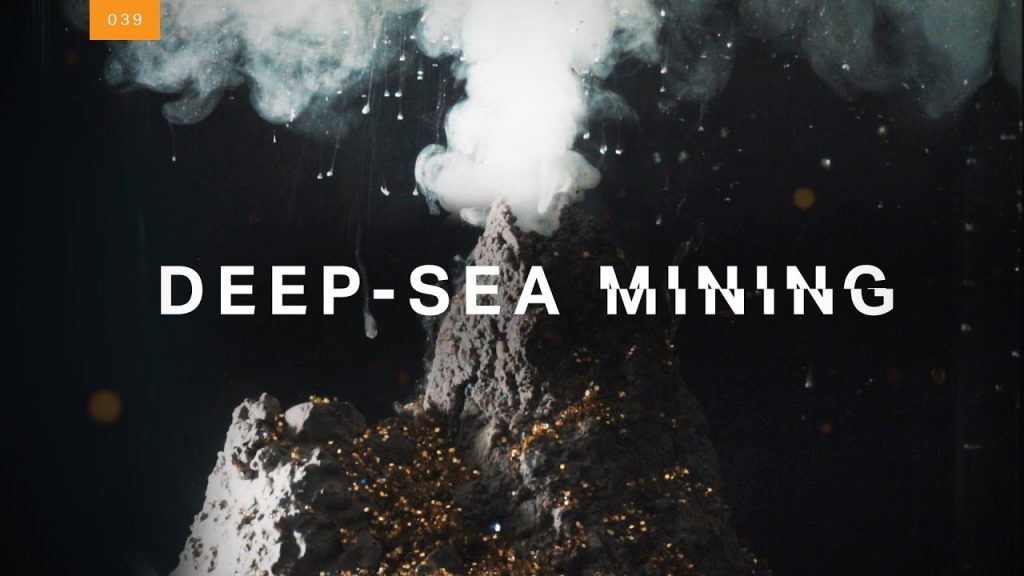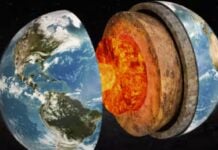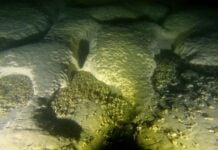Unless you are given to chronic anxiety or suffer from nihilistic despair, you probably haven’t spent much time contemplating the bottom of the ocean.
Many people imagine the seabed to be a vast expanse of sand, but it’s a jagged and dynamic landscape with as much variation as any place onshore.

Space companies want to start mining asteroids. But on the ocean floor, mountains surge from underwater plains, canyons slice miles deep, hot springs billow through fissures in rock, and streams of heavy brine ooze down hillsides, pooling into undersea lakes. And that pristine and unknown underwater world is very promising for finding huge quantities of metals to support the production of our future technology. But consequences of that prosperous underwater mining will turn catastrophic, again.
These underwater peaks and valleys are laced with most of the same minerals found on land.
Scientists have documented their deposits since at 1868, when a dredging ship pulled a chunk of iron ore from the seabed north of Russia.
Five years later, another ship found similar nuggets at the bottom of the Atlantic, and two years after that, it discovered a field of the same objects in the Pacific. For more than a century, oceanographers continued to identify new minerals on the seafloor — copper, nickel, silver, platinum, gold, and even gemstones — while mining companies searched for a practical way to dig them up.
Today, many of the largest mineral corporations in the world have launched underwater mining programs. On the west coast of Africa, the De Beers Group is using a fleet of specialized ships to drag machinery across the seabed in search of diamonds. In 2018, those ships extracted 1.4 million carats from the coastal waters of Namibia; in 2019, De Beers commissioned a new ship that will scrape the bottom twice as quickly as any other vessel.
Another company, Nautilus Minerals, is working in the territorial waters of Papua New Guinea to shatter a field of underwater hot springs lined with precious metals, while Japan and South Korea have embarked on national projects to exploit their own offshore deposits.
But the biggest prize for mining companies will be access to international waters, which cover more than half of the global seafloor and contain more valuable minerals than all the continents combined.
Ocean Mining Regulations
Regulations for ocean mining have never been formally established.
The United Nations has given that task to an obscure organization known as the International Seabed Authority (ISA), which is housed in a pair of drab gray office buildings at the edge of Kingston Harbour, in Jamaica.
Unlike most UN bodies, the ISA receives little oversight. It is classified as “autonomous” and falls under the direction of its own secretary general, who convenes his own general assembly once a year, at the ISA headquarters.
For about a week, delegates from 168 member states pour into Kingston from around the world, gathering at a broad semicircle of desks in the auditorium of the Jamaica Conference Centre.
Their assignment is not to prevent mining on the seafloor but to mitigate its damage— selecting locations where extraction will be permitted, issuing licenses to mining companies, and drafting the technical and environmental standards of an underwater Mining Code.
Underwater Mining Code
Writing the code has been difficult. ISA members have struggled to agree on a regulatory framework. While they debate the minutiae of waste disposal and ecological preservation, the ISA has granted “exploratory” permits around the world.
Some 30 mineral contractors already hold licenses to work in sweeping regions of the Atlantic, Pacific, and Indian Oceans.
One site, about 2,300 miles east of Florida, contains the largest system of underwater hot springs ever discovered, a ghostly landscape of towering white spires that scientists call the “Lost City.”
Another extends across 4,500 miles of the Pacific, or roughly a fifth of the circumference of the planet.
The companies with permits to explore these regions have raised breathtaking sums of venture capital. They have designed and built experimental vehicles, lowered them to the bottom, and begun testing methods of dredging and extraction while they wait for the ISA to complete the Mining Code and open the floodgates to commercial extraction.
Largest Mining Projects Ever
At full capacity, these companies expect to dredge thousands of square miles a year.
Their collection vehicles will creep across the bottom in systematic rows, scraping through the top five inches of the ocean floor.
Ships above will draw thousands of pounds of sediment through a hose to the surface, remove the metallic objects, known as polymetallic nodules, and then flush the rest back into the water.
Some of that slurry will contain toxins such as mercury and lead, which could poison the surrounding ocean for hundreds of miles.
The rest will drift in the current until it settles in nearby ecosystems. An early study by the Royal Swedish Academy of Sciences predicted that each mining ship will release about 2 million cubic feet of discharge every day, enough to fill a freight train that is 16 miles long.
The authors called this “a conservative estimate,” since other projections had been three times as high. By any measure, they concluded, “a very large area will be blanketed by sediment to such an extent that many animals will not be able to cope with the impact and whole communities will be severely affected by the loss of individuals and species.”
Cobalt-Rich Nodules in Deep Sea
Deepwater plains are home to the polymetallic nodules that explorers first discovered a century and a half ago.
Mineral companies believe that nodules will be easier to mine than other seabed deposits.
To remove the metal from a hydrothermal vent or an underwater mountain, they will have to shatter rock in a manner similar to land-based extraction.
Nodules are isolated chunks of rocks on the seabed that typically range from the size of a golf ball to that of a grapefruit, so they can be lifted from the sediment with relative ease. Nodules also contain a distinct combination of minerals.
While vents and ridges are flecked with precious metal, such as silver and gold, the primary metals in nodules are copper, manganese, nickel, and cobalt — crucial materials in modern batteries. As iPhones and laptops and electric vehicles spike demand for those metals, many people believe that nodules are the best way to migrate from fossil fuels to battery power.
Clarion-Clippertone Zone
The ISA has issued more mining licenses for nodules than for any other seabed deposit. Most of these licenses authorize contractors to exploit a single deepwater plain.
Known as the Clarion-Clipperton Zone, or CCZ, it extends across 1.7 million square miles between Hawaii and Mexico—wider than the continental United States.
When the Mining Code is approved, more than a dozen companies will accelerate their explorations in the CCZ to industrial-scale extraction.
Their ships and robots will use vacuum hoses to suck nodules and sediment from the seafloor, extracting the metal and dumping the rest into the water.
How many ecosystems will be covered by that sediment is impossible to predict. Ocean currents fluctuate regularly in speed and direction, so identical plumes of slurry will travel different distances, in different directions, on different days.
The impact of a sediment plume also depends on how it is released. Slurry that is dumped near the surface will drift farther than slurry pumped back to the bottom.
The circulating draft of the Mining Code does not specify a depth of discharge. The ISA has adopted an estimate that sediment dumped near the surface will travel no more than 62 miles from the point of release, but many experts believe the slurry could travel farther.
A recent survey of academic research compiled by Greenpeace concluded that mining waste “could travel hundreds or even thousands of kilometers.”
Impacts of Ocean Mining
While scientists struggle to reach the deep ocean, human impact has already gotten there. Most of us are familiar with the menu of damages to coastal water: overfishing, oil spills, and pollution, to name a few. What can be lost in the discussion of these issues is how they reverberate far beneath.
Maybe the greatest alarm in recent years has followed the discovery of plastic floating in the ocean. Scientists estimate that 17 billion pounds of polymer are flushed into the ocean each year, and substantially more of it collects on the bottom than on the surface.
Mining companies may promise to extract seabed metal with minimal damage to the surrounding environment, but to believe this requires faith. It collides with the force of human history, the law of unintended consequences, and the inevitability of mistakes.
We’re about to make one of the biggest transformations that humans have ever made to the surface of the planet. We’re going to strip-mine a massive habitat, and once it’s gone, it isn’t coming back. Continue reading Strange Sounds and headlines of Steve Quayle .[The Atlantic]











at least one probably more horror stories revolve around such operations unleashing previously dormant sea monsters
Has the sea floor been a quarry in the past.?